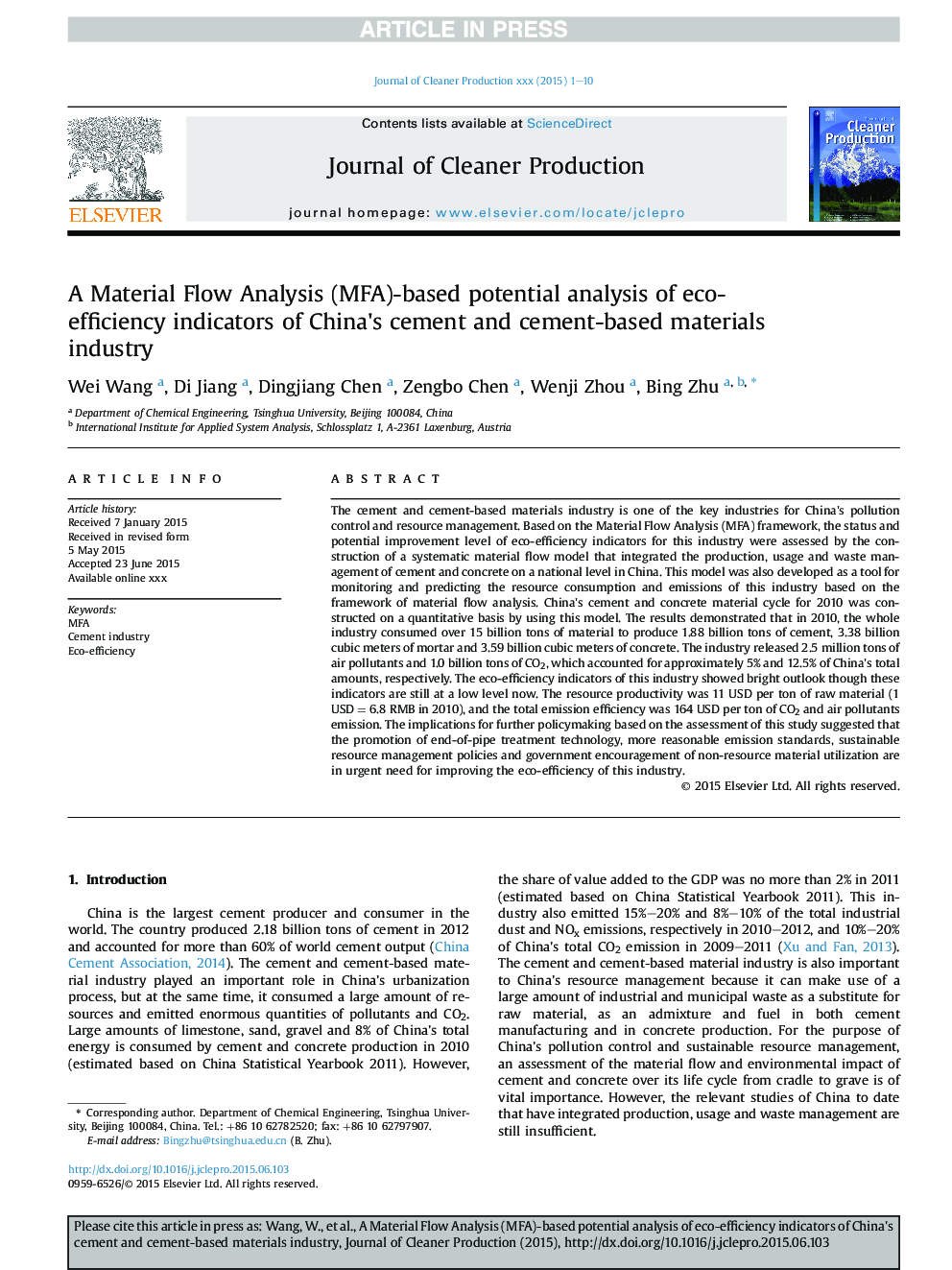| Article ID | Journal | Published Year | Pages | File Type |
|---|---|---|---|---|
| 10688086 | Journal of Cleaner Production | 2016 | 10 Pages |
Abstract
The cement and cement-based materials industry is one of the key industries for China's pollution control and resource management. Based on the Material Flow Analysis (MFA) framework, the status and potential improvement level of eco-efficiency indicators for this industry were assessed by the construction of a systematic material flow model that integrated the production, usage and waste management of cement and concrete on a national level in China. This model was also developed as a tool for monitoring and predicting the resource consumption and emissions of this industry based on the framework of material flow analysis. China's cement and concrete material cycle for 2010 was constructed on a quantitative basis by using this model. The results demonstrated that in 2010, the whole industry consumed over 15 billion tons of material to produce 1.88 billion tons of cement, 3.38 billion cubic meters of mortar and 3.59 billion cubic meters of concrete. The industry released 2.5 million tons of air pollutants and 1.0 billion tons of CO2, which accounted for approximately 5% and 12.5% of China's total amounts, respectively. The eco-efficiency indicators of this industry showed bright outlook though these indicators are still at a low level now. The resource productivity was 11 USD per ton of raw material (1 USDÂ =Â 6.8 RMB in 2010), and the total emission efficiency was 164 USD per ton of CO2 and air pollutants emission. The implications for further policymaking based on the assessment of this study suggested that the promotion of end-of-pipe treatment technology, more reasonable emission standards, sustainable resource management policies and government encouragement of non-resource material utilization are in urgent need for improving the eco-efficiency of this industry.
Keywords
Related Topics
Physical Sciences and Engineering
Energy
Renewable Energy, Sustainability and the Environment
Authors
Wei Wang, Di Jiang, Dingjiang Chen, Zengbo Chen, Wenji Zhou, Bing Zhu,
